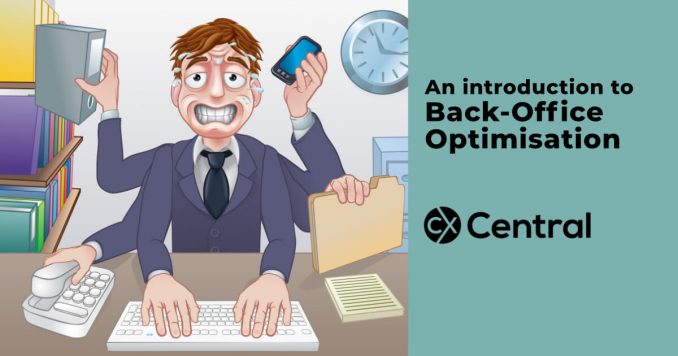
An introduction to Back-Office Optimisation
As a little reminder for those who don’’t work in this space, Workforce Optimisation (WFO) is a strategy implemented to improve the efficiency and effectiveness of an organisation.
There are a number of pieces of software that can help organisations improve efficiency around the areas of:
- Workforce Management (forecasting, scheduling and tracking staff performance);
- Quality Assurance;
- Performance Management;
- Coaching; and
- Analytics.
Whether used alone or together these tools provide incredible insight into an organisation’s performance which in turn can be used to improve one of the most important factors to us as contact centre professionals: the customer experience.
Why WFO practices are spreading enterprise-wide
Contact centres have always been strongly measured and monitored whereas other business areas, such as the Back-Office or the retail floor, have not.
This is usually because the required systems for monitoring haven’t been in place in other business areas… until now.
WFO tools are evolving and business leaders are using WFO tools outside of the typical contact centre environment.
And this leads us to the hot topic of the moment: Back-Office Optimisation.
In organisations such as banking and insurance where much of the customer value is created behind the scenes in the back-office, increased backlog and delays not only impact back-office staff but also the front office workload (for example if customers repeatedly call chasing their approvals).
Improving the efficiency and effectiveness of your back-office processes can lead to significantly reduced costs, greater productivity and, of course, a better customer experience across the entire organisation.
How can WFO tools and software help your back-office optimisation?
Workforce Management (WFM):
Forecasts the workload based on actual requirements rather than team leader guesswork thus enabling more accurate scheduling.
A good WFM tool enables multi-skilled staff to be scheduled across tasks, departments and locations as well as enabling a better understanding of what SLA’s are achievable given the work volumes, backlog and staff skills.
Back-office routing solutions:
Act like a virtual queue to optimally distribute work to your back-office employees whether it be reports, email, white mail etc.
They monitor work item progress in real-time and re-allocate work to other employees when resources are out of balance. In other words, they are like an ACD for back-office processing.
Performance Management:
Helps ensure that staff activities are aligned with your key objectives such as outstanding customer experience, low operating cost and strict compliance.
Performance management solutions enable you to view and understand employee achievements from many different perspectives and then take immediate action to get individuals back on track if required.
Performance Based Coaching:
Enables staff to be coached based on actual skill requirements rather than generic, “one size fits all” training.
Quality Assurance/Analytics:
In the back-office, this is typically done using desktop monitoring/analytics that captures and analyses back-office employees’ desktop activity and provides visibility into process inefficiencies.
Desktop analytics provides access to a complete history of system response times, keystrokes, specific applications accessed, links followed and essentially everything happening on the desktop.
The results can be input into performance management.
The future is a lean, mean, efficient back-office machine
As WFO becomes more prevalent in back-office operations, enterprises will not only see higher productivity, but they will be able to share staff between front and back offices to more easily adapt to the peaks and troughs in volumes by sharing resources and maintaining or reducing cost.
As a result of this, we are beginning to see organisations thinking more strategically about both the back and front offices when purchasing or replacing their WFO solutions.
The only question that remains is how you’ll use WFO tools to boost the efficiencies within your organisation.
Next steps
- Search: Find consultants and technology that can help with your WFM strategy in our Business Directory
- Connect: Use our free CX Connect Service and we’ll introduce you to a recommended shortlist of suppliers that can help with your Back-Office strategy.
- Read more articles on Workforce Optimisation





Be the first to comment